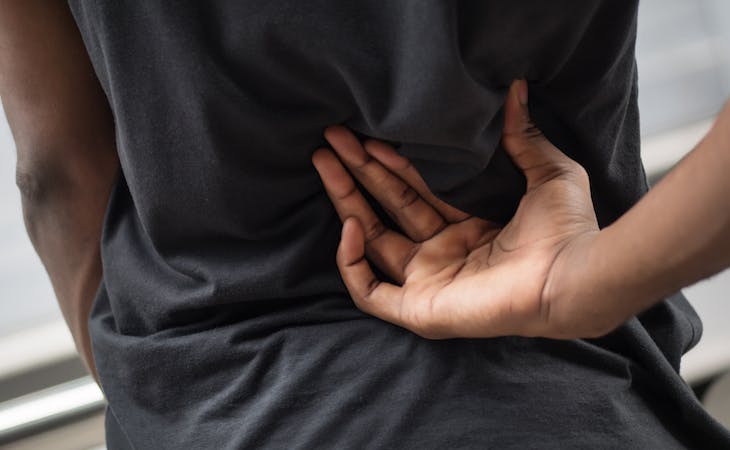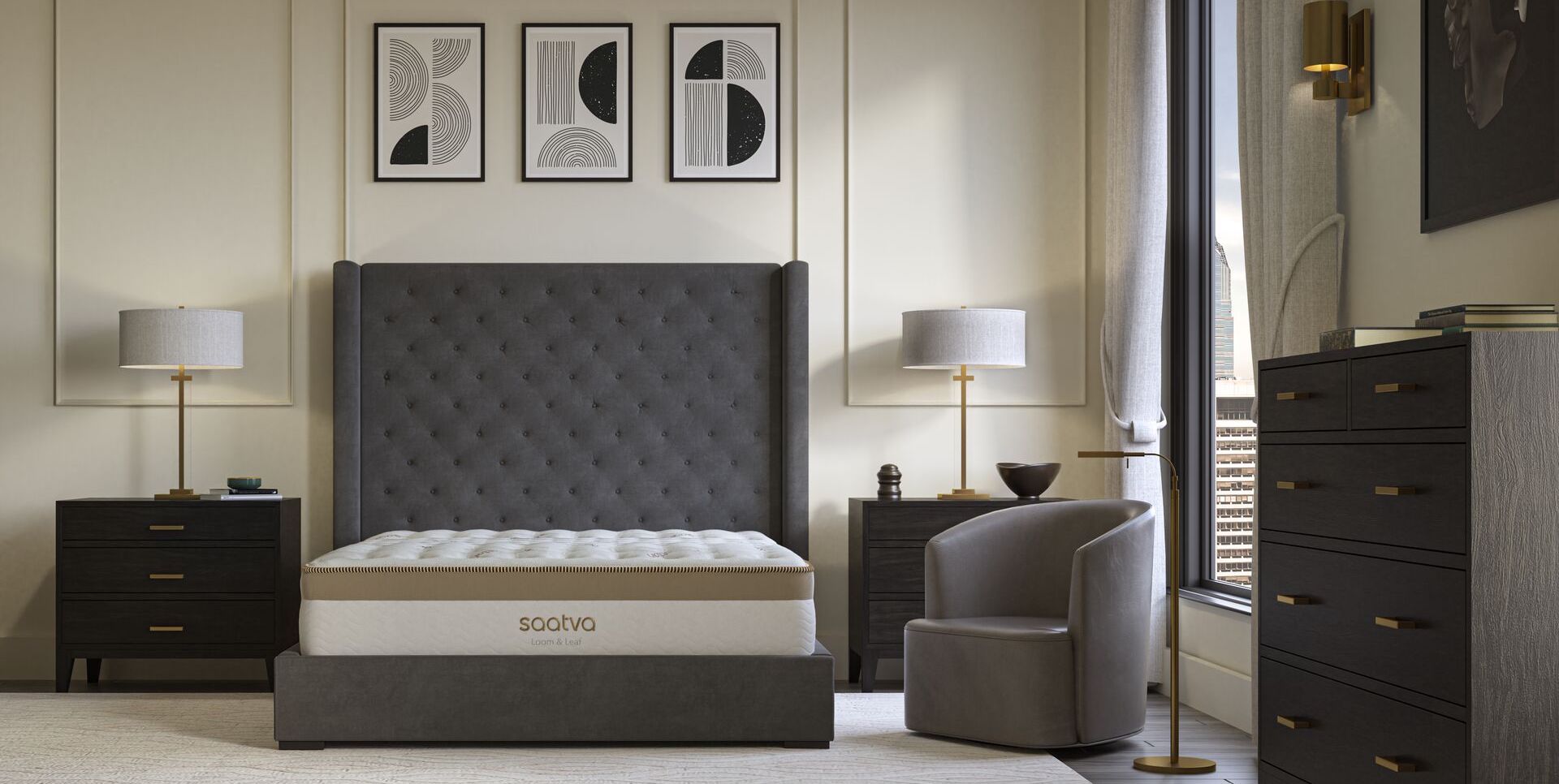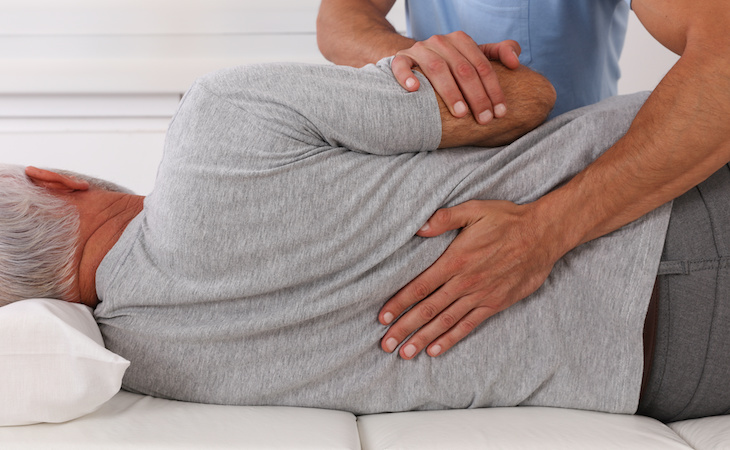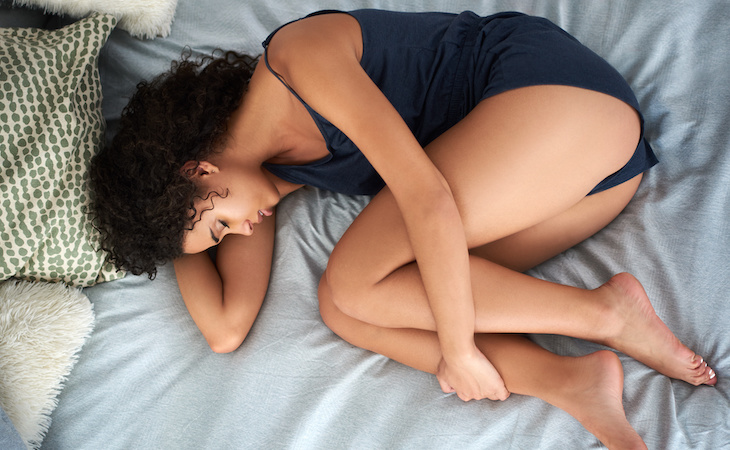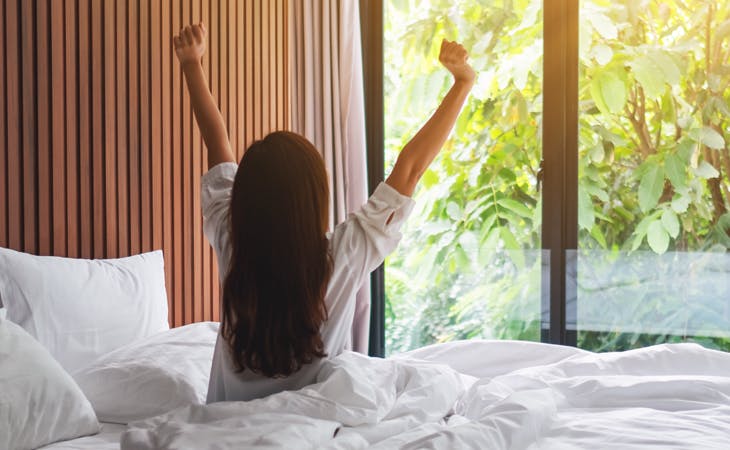There are a lot of different types of back pain—sprains, spasms, and strains just to name a few—but there’s one that’s a lot more common than all the rest.
It’s lower back pain, something that you’ve likely dealt with at one time or another. In fact, according to research, more than 80% of people will experience lower back pain at some point in their lives. And you know what else is likely happening to these 80% of people? Poor-quality sleep, as they’re kept up at night from their pain.
Since sleep disruptions caused by lower back pain are such a common trend, we chatted with Alex Tauberg, chiropractor and owner of Tauberg Chiropractic & Rehabilitation in Pittsburgh, for advice on how to sleep with lower back pain.
What causes lower back pain
You may be wondering why you’re experiencing discomfort in the area of your back that starts at your rib cage, also known as the lumbar spine. There are several things that can lead to low back pain. Here are the most common:
Muscle strain
When a muscle, tendon, or ligament becomes strained due to heavy lifting, repetitive movement, or a sudden accident, it can result in damage leading to low back pain.
Bulging or ruptured discs
Otherwise known as a herniated disc, this injury takes place when the jelly-like, protective substance in a vertebra pushes out, and this can irritate a close-by nerve.
Arthritis
Spinal arthritis, which can be felt in the lower back, is inflammation that can be caused by wear and tear over time.
Scoliosis
Although the exact cause isn’t known, scoliosis, or a curvature of the spine, can develop in the growth spurt stage of a child’s life before puberty.
Osteoporosis
A lack of calcium can lead to bone loss and an increased risk of fractures.
Sciatica
Simply put, sciatica is nerve root irritation resulting from a disc herniation (when the inner part of the disc protrudes into and possibly past the outer part of the disc) or spinal stenosis (a narrowing of the pathway through which the spinal cord or nerve roots pass).
How to sleep with lower back pain
As many of us know, lower back pain is no picnic, and it can certainly put a damper on a good night’s sleep.
“Back pain can make it difficult to find and keep a comfortable position,” says Tauberg. “As a result, this clearly disrupts sleep. Those suffering with back pain may find certain positions uncomfortable and others may not be able to stay in any one position for an extended period of time without their pain increasing.”
Tauber shares his best advice for getting better sleep when you have lower back pain.
Find the right sleep position
“Ideally, it is best to sleep in a neutral position, such that the spine is neither hyperflexed nor hyperextended,” Tauberg says.
So, which sleep position achieves this relaxed spine while sleeping? It’s the position that doctors recommend time and time again: the back. “Sleeping on your back can help to keep a more neutral alignment and takes stress off of the musculature surrounding the spine,” explains Tauberg.
What if you’re a lifelong side sleeper? You’re in luck as well: “Side posture is also an acceptable sleeping position,” says Tauberg. “However, one should ensure they do not curl up when sleeping on their side. Curling up can cause the low back to enter a flexed state, which could be detrimental for a herniation.”
Stomach sleeping, on the other hand, is typically frowned upon as an effective sleeping position for back pain.
Related: Is your sleep position causing your back pain?
Try low-impact exercises
There are things you can do to improve your lower back pain, and in turn, your sleep quality, during your waking hours. For example, some low-impact exercises can be quite beneficial for lessening low back pain.
“Swimming is one of the best types of exercise for low back pain, as you are able to stay active and be mobile while at the same time reducing the weight-bearing of the spine,” says Tauberg.
Other forms of low-impact aerobic exercise can be helpful as well, like biking, stationary cycling, and yoga.
Build muscle strength and flexibility
“Strengthening the core, which includes the muscles of the low back, helps to support the area and prepare the area for the challenges of regular life,” says Tauberg. “Staying mobile and flexible can also help with back pain as our joints and bodies crave movement in order to stay healthy.” Staying mobile and moving can help reduce pain and overall stiffness, he adds.
That means it’s time to get stretching. Good moves for the lower back include hamstring stretches, wall sits, and pelvic tilts. Ab exercises can involve partial crunches, planks, and lunges.
Choose a mattress with the right support
These are all great things to do when struggling with lower back pain, but a quality night’s rest can also come down to your foundation—your mattress, that is.
“In general, I advise people to consider a firm mattress, though in the end it is a personal decision,” Tauberg says. “As long as your body feels supported by the mattress, then that is acceptable.”
He adds that if possible, it might be a good idea to test out a mattress through a trial before making a purchase. “The best way to determine if a mattress is right for you is to see how you feel after a night of sleeping on the mattress,” he says. “If you wake up feeling stiff or sore, you may want to explore other options.”
Use pillows strategically
Pillows can also be a game-changer as you seek out the sleep you, and your lower back, need.
If you’re a side sleeper, Tauberg suggests placing pillows in between your elbows and knees, which will allow your back muscles to be in a more neutral position.
When sleeping on your back, he advises placing a pillow under your knees, something that can alleviate some of the tension, particularly if you have sciatica.
The bottom line: Sleep is something that your entire body requires, and it can help heal your lower back pain in the process.
“Sleep is an important part of restoration, and as such, is necessary when recovering from any type of injury but especially a back injury,” says Tauberg. While it can be difficult to find a position to sleep in comfortably, it is very important. Lack of sleep can impair the healing process and can in some cases cause issues like back pain to linger.”

